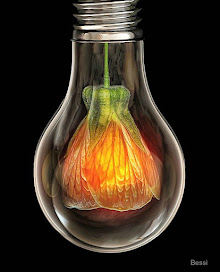Wednesday, October 17, 2007
Perfume Memories: The Magic of Miss Dior
When a mother applies makeup in the presence of her daughter, she generates an air of womanliness that evokes awe and wonder, but with a single spray of perfume her femininity is exalted. As the scent diffuses, her beauty radiates beyond the maternal and flirts with a provocative gentleness that every young girl desires to emulate. Primary fragrance experiences leave more than enduring impressions in their wake; they set the stage for future tastes and passions while simultaneously evoking the past.
I know the scent and bottle shape of each of my mother’s perfumes by heart. Millot’s Crepe de Chine (1925), Jean Patou’s Joy (1930), Nina Ricci’s L’Air du Temps (1948), Christian Dior’s Miss Dior (1947), and a Caron holiday trio of Nuit de Noël (1922), Fleur de Rocailles (1934), and Bellodgia (1927) are mesmerizing creations that divulge their alluring complexity over time, a quality that is rare in commercial perfumes released over the past twenty years. These “classic” perfumes arouse the senses and call for immediate pause and reflection. Substantive and mysterious, they stir a timeless impression of feminine grace.
My mother never bought her own perfumes as my father took to lavishing her with carnation bouquets (her favorite) and fine French fragrance on birthdays and anniversaries. Not one to roam the floors of retail department stores, my father relied on the advice of a boutique owner from India, whose haute selection of perfumes inevitably led to purchases of distinction.
Whoever this perfume purveyor was, he must have had a preternatural sense for his customers. Each scent he sold to my father possessed notes that resonated with my parent’s lives. Bellodgia and L’air du Temps are carnation classics and pleased my mother immensely as they represented her favorite flower. Joy, a rich reminiscence of rose and jasmine, echoed the spirit of flowers that imprinted their culinary and olfactive qualities on my great grandparents, who migrated from Iraq to Palestine by foot. Miss Dior (eau de cologne) was the queen of all gifts as a note in the dry down of this Chypre fragrance resembled a personal scent that anointed my father—the musky sweet, animalic aroma of tanned leather skins which filled his garment shop.
As a child I was a mischievous explorer who enjoyed opening dresser drawers and medicine cabinets. It was during one of these escapades that I came across a bottle of Miss Dior. It was located in a bureau drawer that was easy for my small fingers to open in childish stealth. Carefully tucked away, beneath folded undergarments and silk scarves was a white satin box that contained Miss Dior. It seemed so special on the outside, which is what motivated me to open it immediately so I could examine its contents. There was a black and white houndstooth pattern on the label and an aromatic trace that reminded me of the sweet scents of spring and autumn mixed together.
I attentively twisted the cap and placed my finger over the mouth of the bottle before tilting it. Gently dabbing the fragrance behind my ears, in what I am certain was an exaggerated lady-like manner, I began to feel the perfume’s emotional power. This scent, this magnificent invisible veil, was as enchanting as any fairy tale I’d ever read. I sat quietly and was discovered by my mother, who besides having an incredible sense of smell, has what is referred to as “mother hearing.” I was gently reprimanded and wasn’t sure why the chastening came with a smile, something that makes perfect sense to me now that I am woman.
My mother wore Miss Dior whenever she and my father were invited to weddings and celebrations. Her Sephardic heritage blessed her with incredible beauty. Her skin was fair and flawless, her eyes a soft brown, her hair a natural jet-black and her figure—absolutely perfect. The only makeup she ever wore was foundation, blush, lipstick and pressed powder (all Revlon). There was one particular gown in her collection that seemed to have been made just for her. The top half was made of rich black velvet and the skirted portion, from the waist down, had alternating strips of black and white satin. When she put on this gown and added a touch of perfume, my younger sister and I were rendered speechless.
On one occasion, my father, who adored seeing my mother dressed up for affairs, looked at her admiringly and kissed her on the cheek. This sent my sister and me into fits of hysterical, awkward laughter. We’re still smiling today as in January 2008 they will have been married for 45 years. Perhaps there is a little magic in Miss Dior…
Notes:
The photo of my mother, Rachel, was taken before she met my father. In addition to the “little black dress” in the photo, she wore Crepe de Chine, the first French fragrance she purchased for herself. She celebrated her birthday this past week and in grand tradition received a bouquet of carnations from her husband.
A MUST READ: An article that resonates with the emotional power which fragrance exerts on memory appeared in The Seattle Post Intelligencer on September 25, 2007. In "Perfume and the Memory of War," Erin Solero examines the connection between history and fine fragrance. Referencing classics from Guerlain and Caron, she draws attention to events which stirred the emotions of those living through war, via perfume. This is by far one of the best essays ever written on the subject stateside. One hopes that this is not Ms. Solero’s last fragrance piece as it is compelling, erudite and gives fine fragrance its due.
Miss Dior is available in fine department stores. The current formulation (part of a 1992 re-branding) is a bit toned down in its animalic aspects. The remnants of a vintage bottle of eau de cologne from 1962 possess a much deeper character. Though I still enjoy the current iteration I would suggest that Parfums Christian Dior consider the rising interest in Chypre fragrances and restore Miss Dior to her original glory. Most fragrance bloggers concur on this fact.






